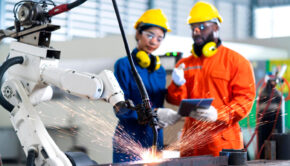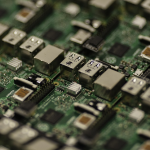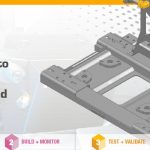Envisioning the Society Our Technology is Creating
As we delve deeper into the 21st century, the lines between technology and science fiction are becoming increasingly blurred. For example, the high-profile 2018 Black Mirror episode “Nosedive” explored the pitfalls of a dystopian society wherein humans are ranked based on their social worth. The following year, similar technology, called the social credit system, was set to be implemented in parts of China.
Surveillance is just the beginning when it comes to the ways in which cutting-edge technology is changing how we live, work, and interact. Today’s technological innovations, including artificial intelligence and 3D printing, are poised to solve a number of problems. But they’ll create a few as well, and society must be able to adapt to those changes in order to thrive.
If the history of humanity is any indication, however, adapting to changes spawned by technological advancement is a crucial aspect of existence. For example, the invention of the printing press in 1436 fundamentally altered the way in which the world works. Historians have even referred to the printing press as “one of the most important inventions of all time,” a designation it shares alongside modern tech such as touchscreens, artificial intelligence (AI), and 3D printing.
The society that modern tech is creating may look vastly different from what we’re used to. But predicting what the future has in store may require a bit of imagination. Let’s take a look at several forms of innovative tech and consider the ways in which that tech may impact society, both positively and negatively.

Image source: https://unsplash.com/photos/fJ5OvXFRGsI
Increased Surveillance and Tracking
Black Mirror isn’t the first creative work to explore the concepts of surveillance and monitoring at the societal level. Indeed, George Orwell’s famous novel “1984” envisioned a world in which every aspect of life is monitored and essentially stripped of individuality. Since its release in 1949, “1984” has seen its fair share of criticism as well as comparisons to modern life.
To many critics, Orwell’s vision of contemporary surveillance technology is spot-on, especially as digitization continues to saturate every aspect of modern life. Thanks in part to our ability to stay constantly connected, mass surveillance can no longer be lumped into the realm of science fiction. Governmental bodies are indeed tracking the daily movement and online activities of our citizens, assisted by big data to help make sense of all the information gathered.
While the invasive surveillance tactics used across China garner plenty of press, various other countries also keep a close eye on their citizens. For instance, there are an estimated 6 million surveillance cameras posted across the United Kingdom. That equals roughly one camera for every 14 citizens, inviting questions on the ways in which mass surveillance may infringe on personal liberties.
Innovations in Healthcare
But technology isn’t all about surveillance and control, of course. Take artificial intelligence, for example — much like the printing press ultimately led to increased literacy rates, AI is helping to streamline patient care in the medical industry while reducing costs. AI can be found in wearable devices that monitor vital signs in every location and in diagnostic devices used by healthcare providers.
Further, as more and more healthcare facilities transition to electronic health records (EHRs), AI can keep data organized, accessible, and safe from security breaches. When they were first introduced, EHRs were also supposed to help reduce waste and “eliminate red tape,” but the tech fell short of its potential. AI may be the missing link that gives EHRs the final push needed to completely transform the medical industry.
But as far as groundbreaking, tech-fueled changes in the healthcare industry go, AI is just the beginning.
The Wide-reaching Implications of 3D Printing
In a few short years, 3D printing evolved from an intriguing concept to a mainstream technology used in hospitals, libraries, and beyond. In medical settings, organ printing is poised to become a reality, one that would completely upend the organ transplant game. Scientists have yet to replicate a complete organ using 3D printing tech, but they have crafted mini organoids and models of tissues.
Interestingly, science fiction predicted the 3D printing of organs decades before the tech was invented. In 1990’s Darkman, Liam Neeson starred as Dr. Peyton Westlake, who produces his own synthetic skin following an accident that left him with severe burns. It may just be that truth will mirror fiction in this case, as synthetic 3D printed skin is likely to precede full organ creation.
As the healthcare industry continues to work towards complete organ replication, 3D printing is being used in myriad other applications. 3D printing technology allows organizations of all types to create parts they need without waiting for an outside company to produce and ship those parts. The tech is also beneficial in legal applications such as accident reconstruction. Investigators and insurance agents can use 3D printing tech to create a detailed model of the accident scene, in order to more accurately determine fault.
What Does the Future Hold?
When it comes to the look of a potential society fueled by technological advancements, we can’t predict the future our children will experience. What is certain, however, is that future tech will indeed change our roads and skies, the ways in which healthcare providers treat patients, and how we communicate.
















